Gregory Manchess
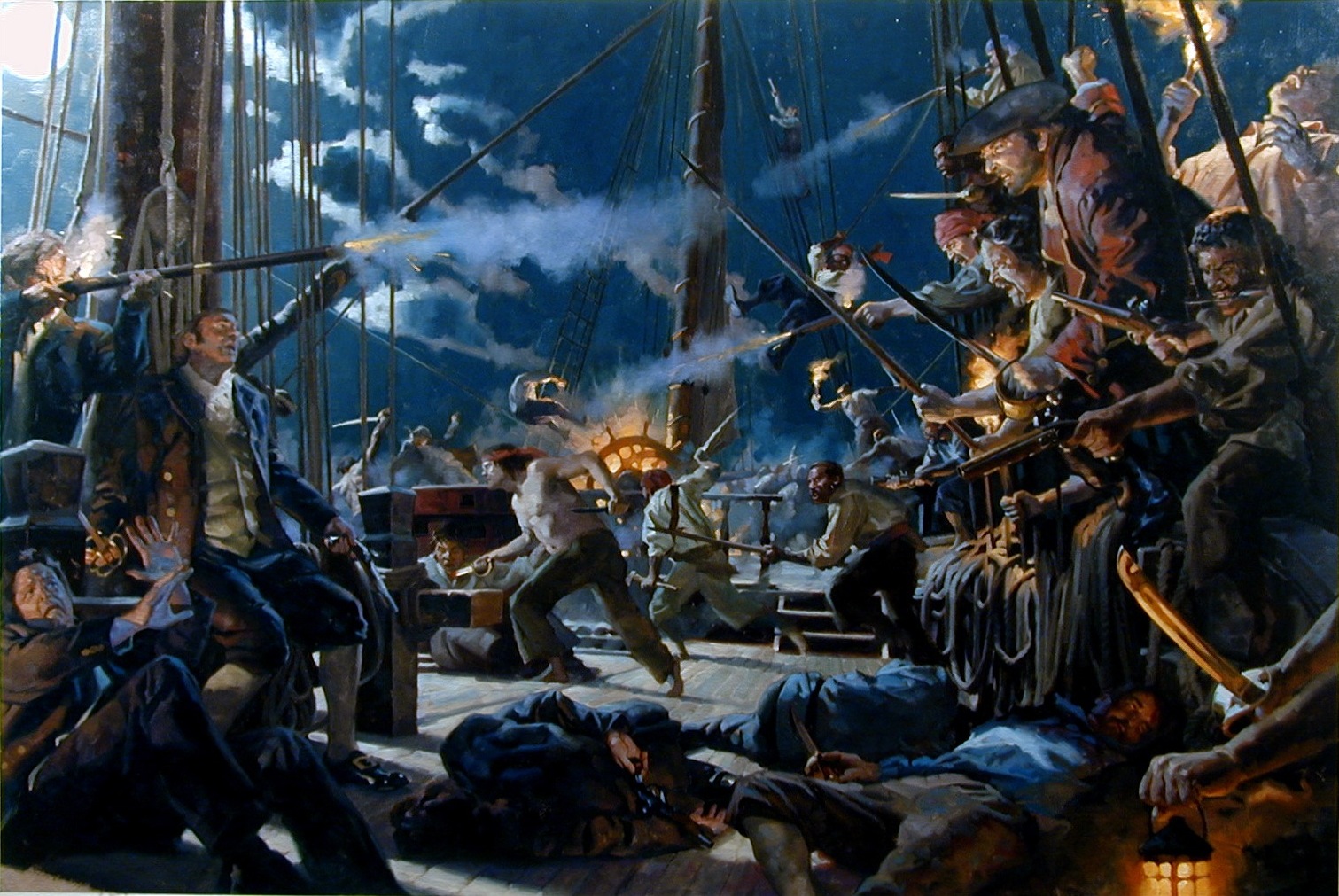
Pirate Paintings for National Geographic Pt. 2
Wednesday, August 24th, 2011
The first major painting for the Real Pirates exhibition was a battle scene involving loads of figures, both pirates and non-pirates. Based on a specific, real event in the history of Black Sam Bellamy’s pirate activities, I depicted an attack against the merchant frigate Tanner, moored off Petit Grove near Haiti. The pirates sneaked up the side of the ship and washed over the rail to overwhelm the unsuspecting crew.
Overall, there were four figures and six major scenes from the history of the Whydah that the client wanted to depict for the project. Since the deadline was already looming, I started with the battle scene to get the anxiety of designing such a time-consuming scene out of the way. If something went wrong, I’d be able to adjust as I went through the rest of the paintings.
I thought I would be depicting this entire scene in daylight, from a wider vantage point. But the client wanted to see Black Sam and some of the crew from a closer pov.
And the attack occurred at midnight.
The deadline for the entire job was critical enough, but adding a night engagement to an already crowded visual was daunting. As I proceeded through it though, I realized how I could use light to highlight specific moments within the scene. In effect, it allowed me to use stage lighting.
Here’s a fast sketch to establish the general composition. Then I shot reference to match it. I got a couple of illustrator buddies in a garage in Tacoma, WA, to wear costumes and act piratical to depict a wide range of mayhem. Quite a few ‘arrrghs’ were used in the shoot. (btw, it’s pronounced “arr” even though it’s spelled with a ‘gh.’ Just stuff ya pick up when working on pirate jobs…)
I didn’t get a quick official ‘ok’ from the client for this particular sketch, but as time was short, I started it anyway, taking the risk that they would love it. Since there was no time for color studies either, this would be the first finished piece the client would see in order to judge whether I was painting in the style they wanted.
Within the first three weeks, I had to travel during to meet with the art director, Mark Lach, for another aspect of the murals for the exhibit. I brought the painting with me and unrolled it in front of him in a quiet corner of the airport. He liked it immediately and we both knew from that point on, what the art would look like. This was a great relief. I wouldn’t have to worry about what they were expecting.
The only change: remove the beards from all of the pirate faces. (More on this later. A small detail from a historian, “pirates didn’t have beards,” that became rather debatable.)
I used some reference shots taken several years earlier to design the deck scene.
The painting in progress:


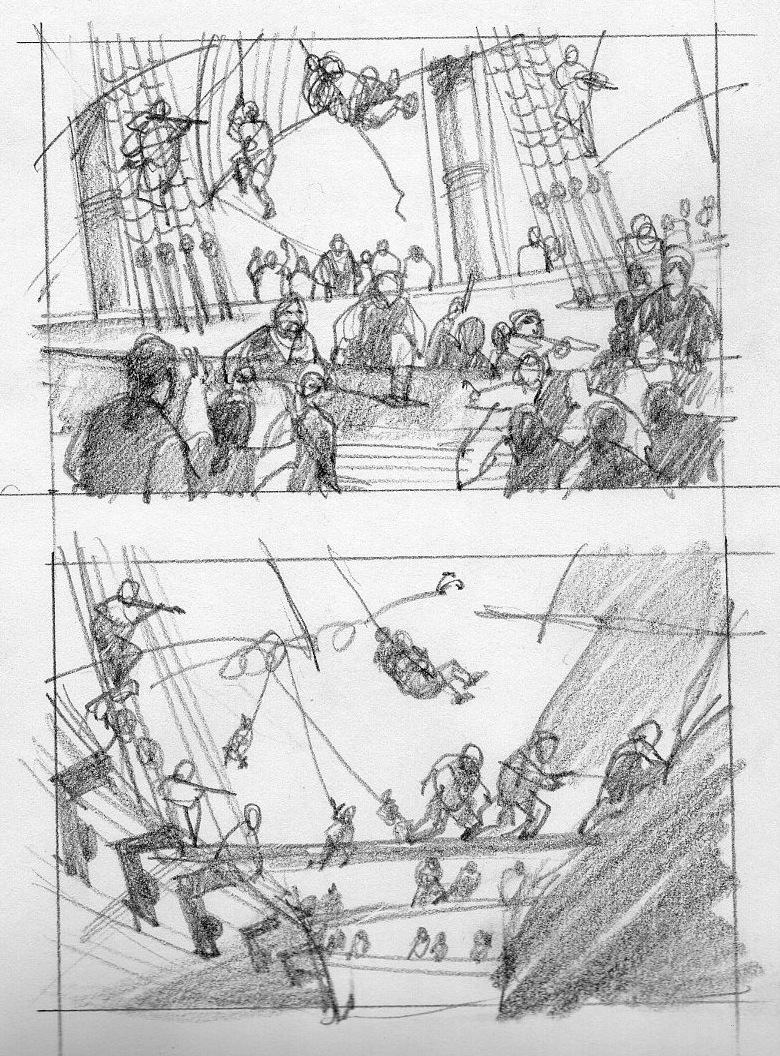
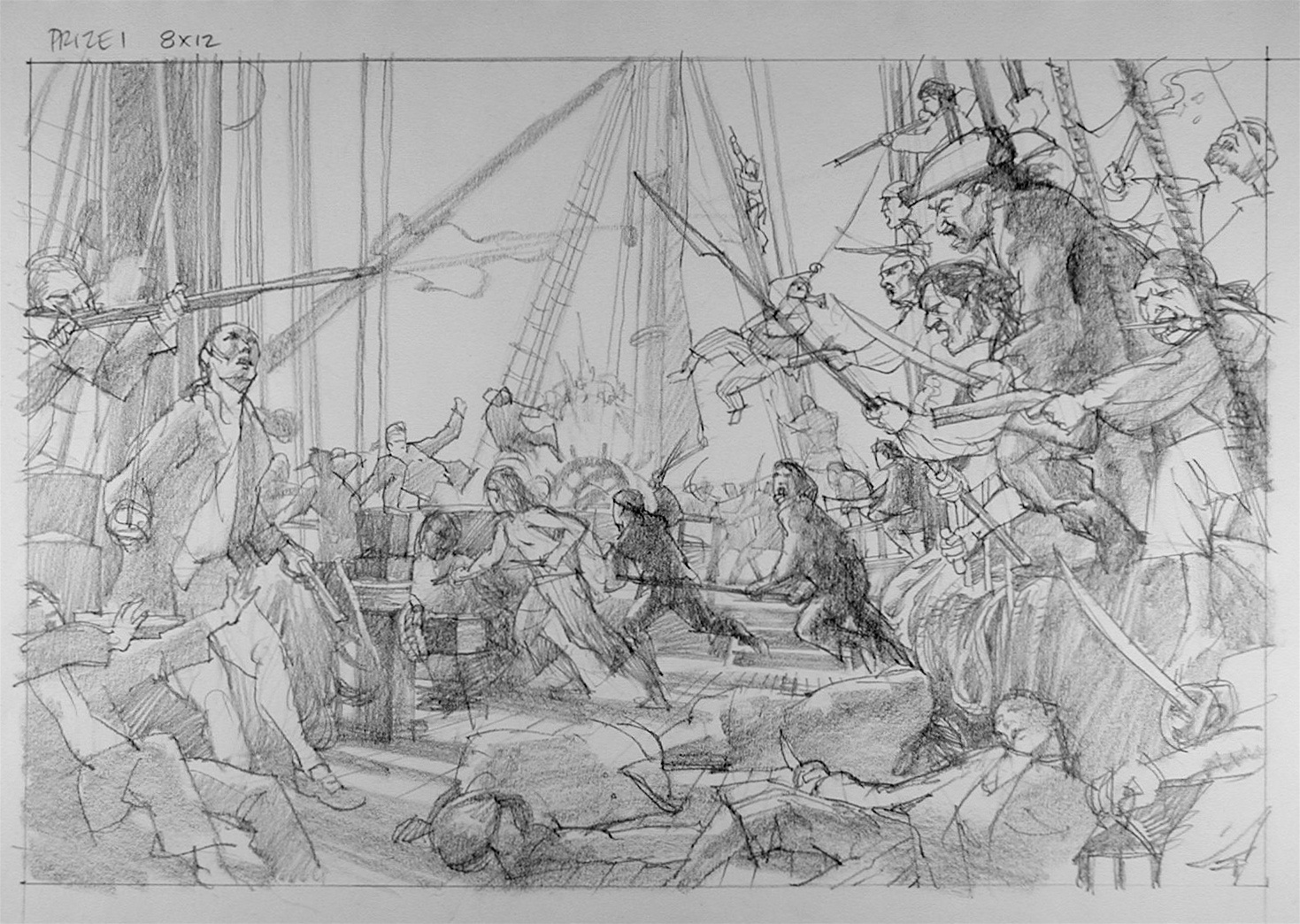
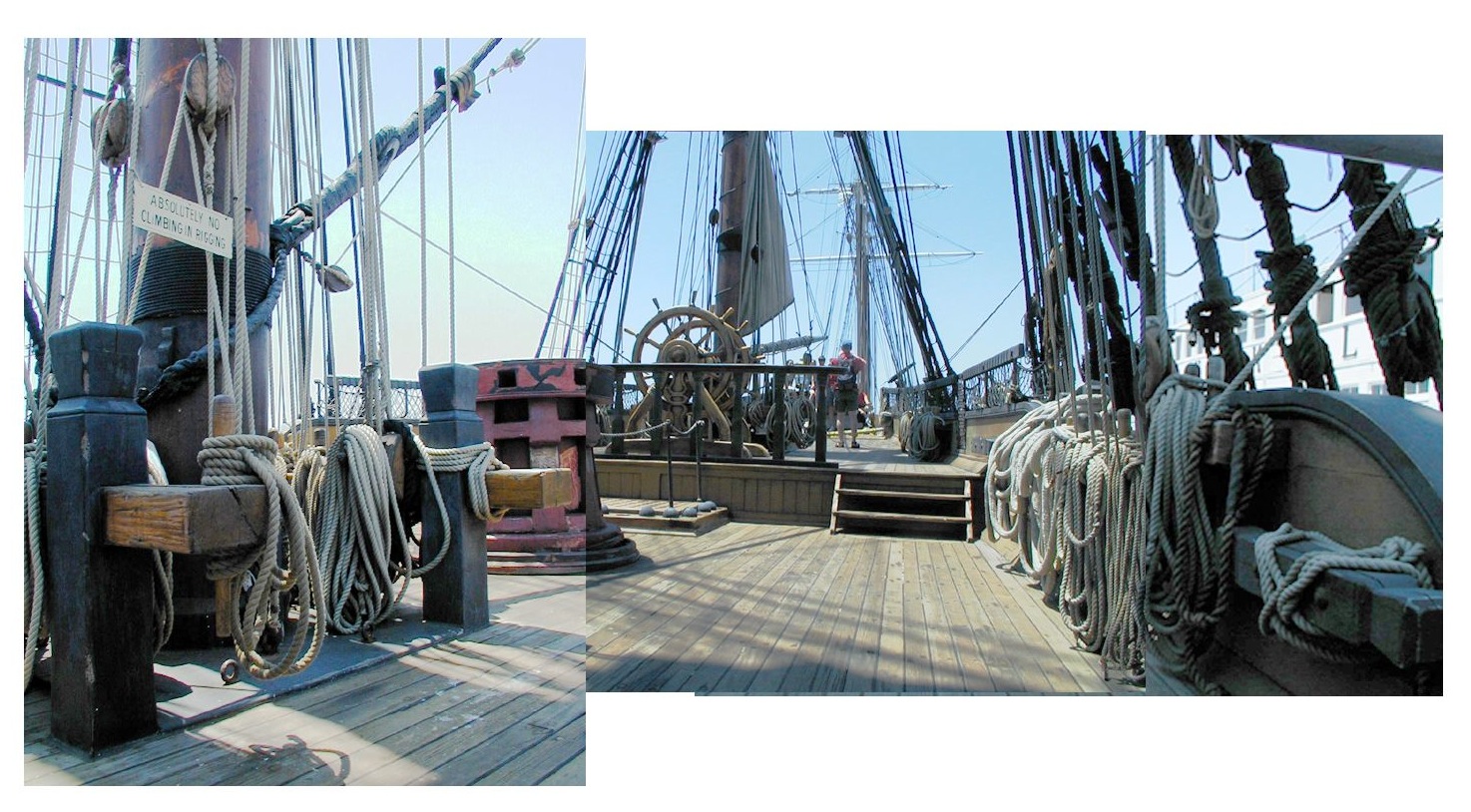
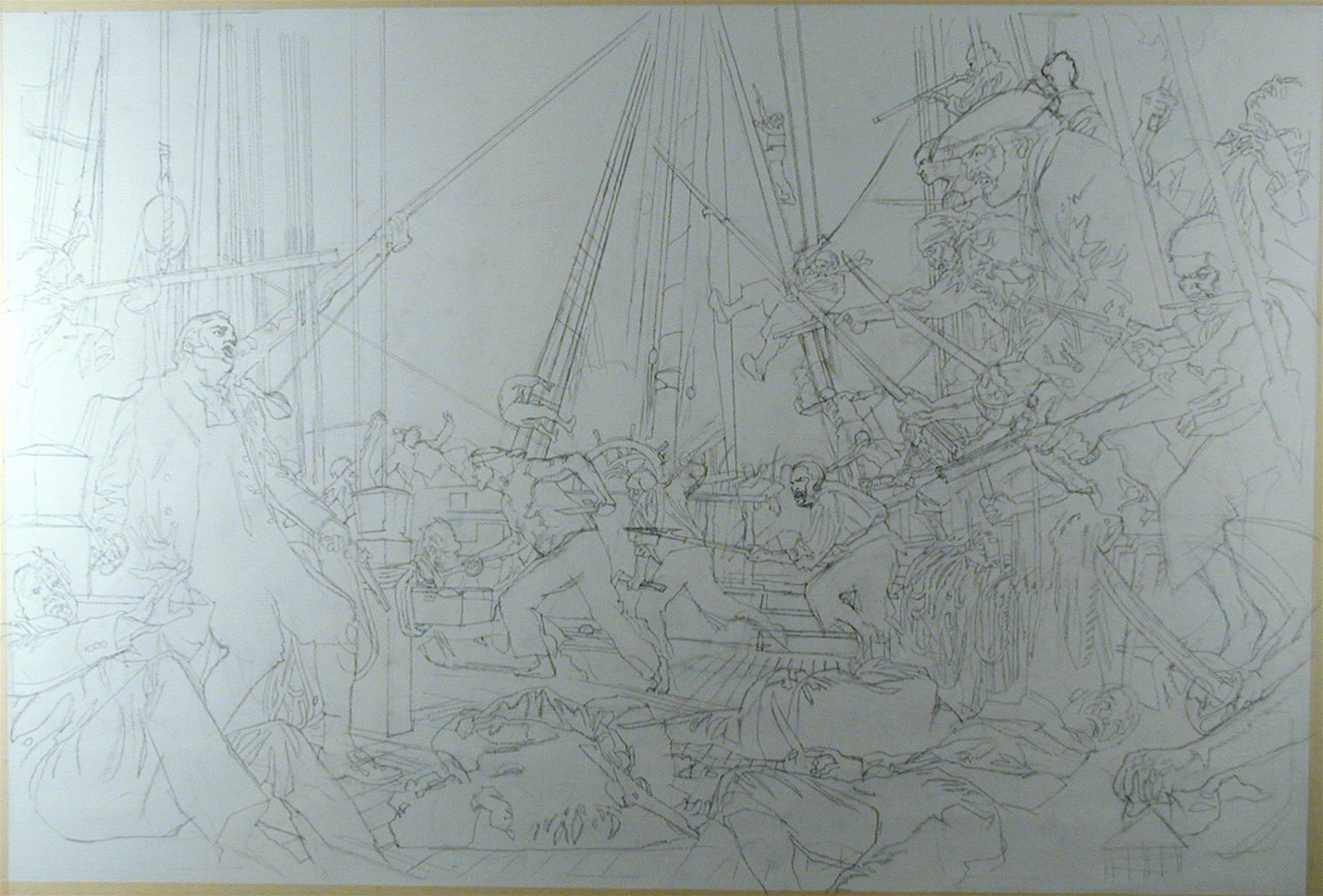
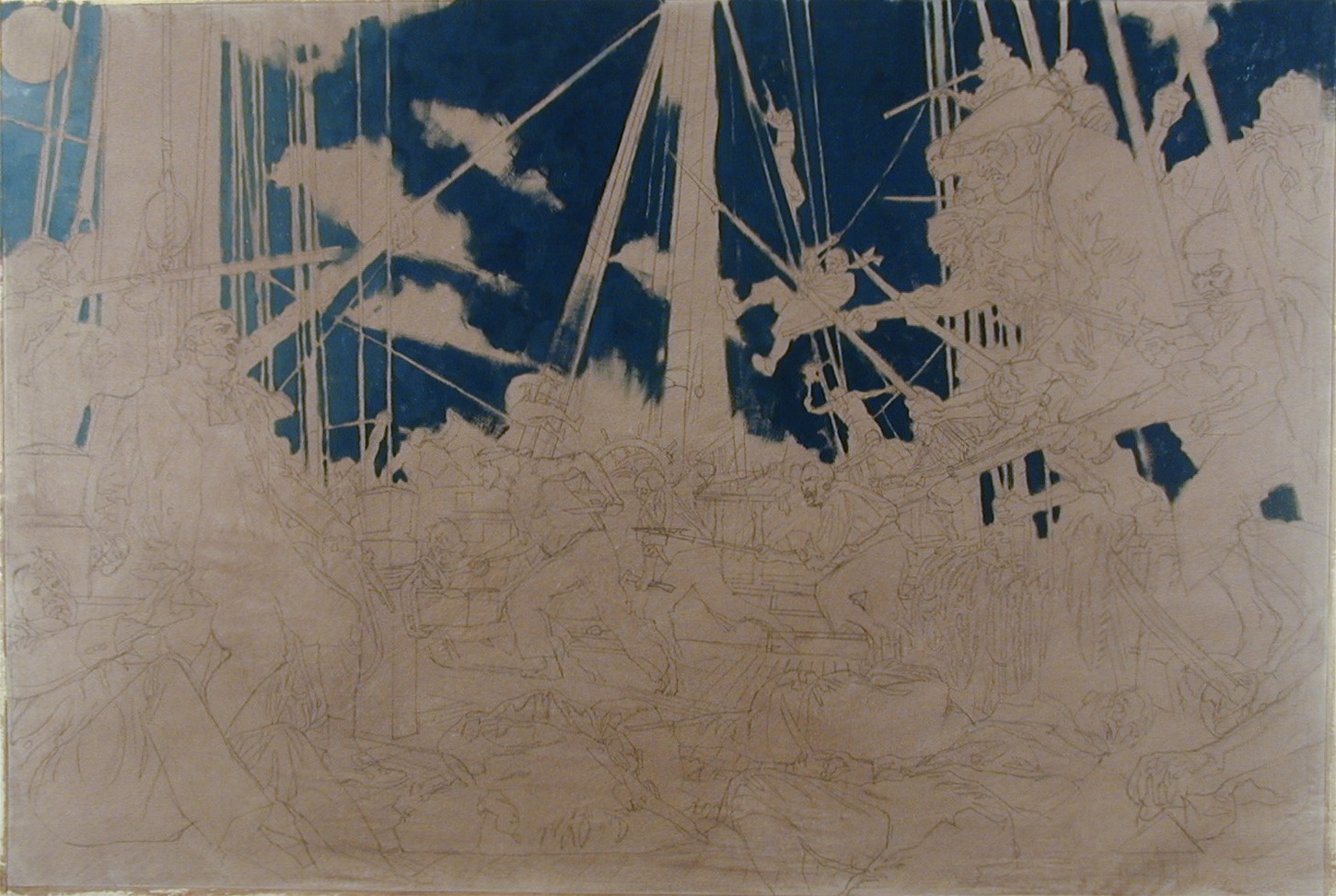
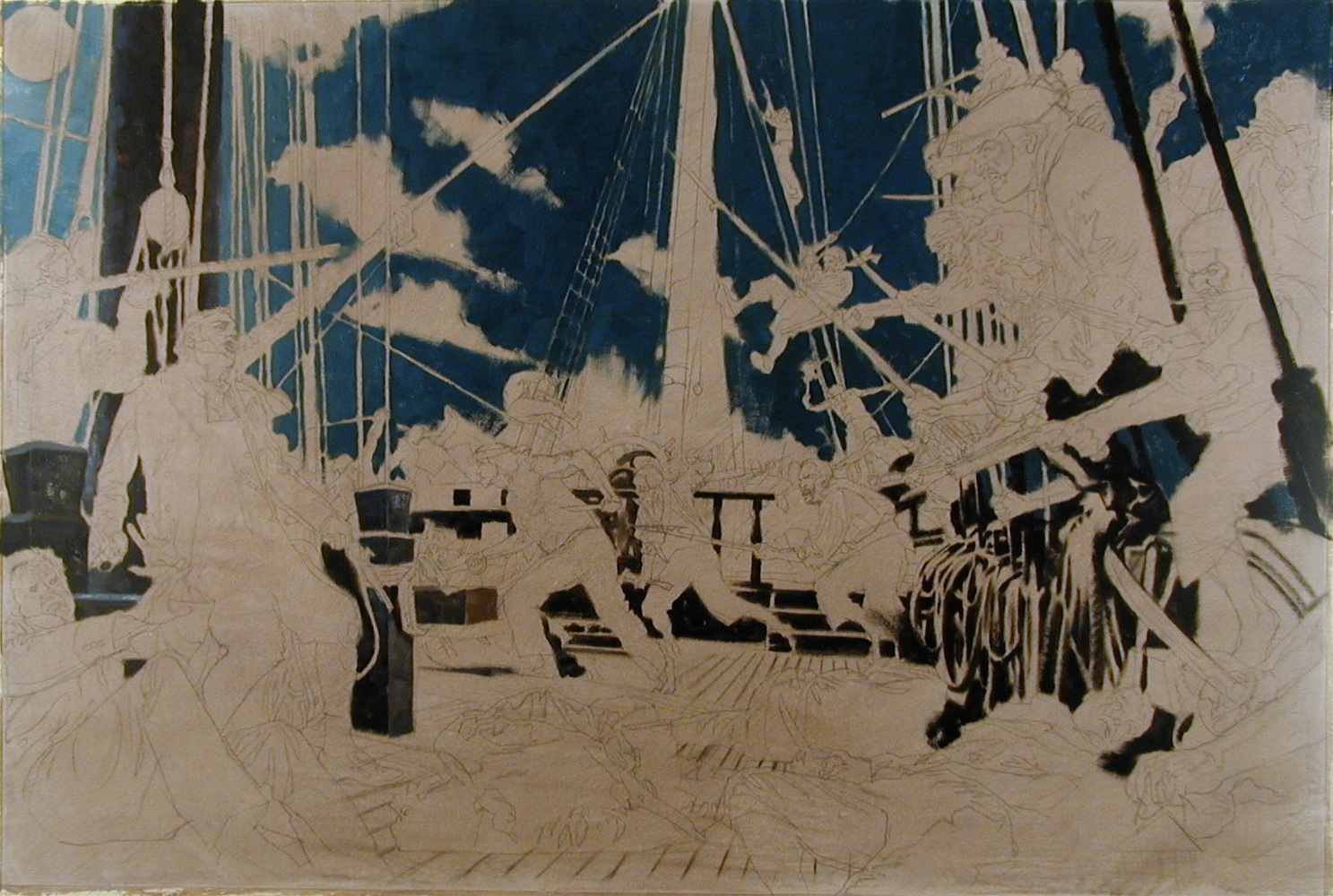
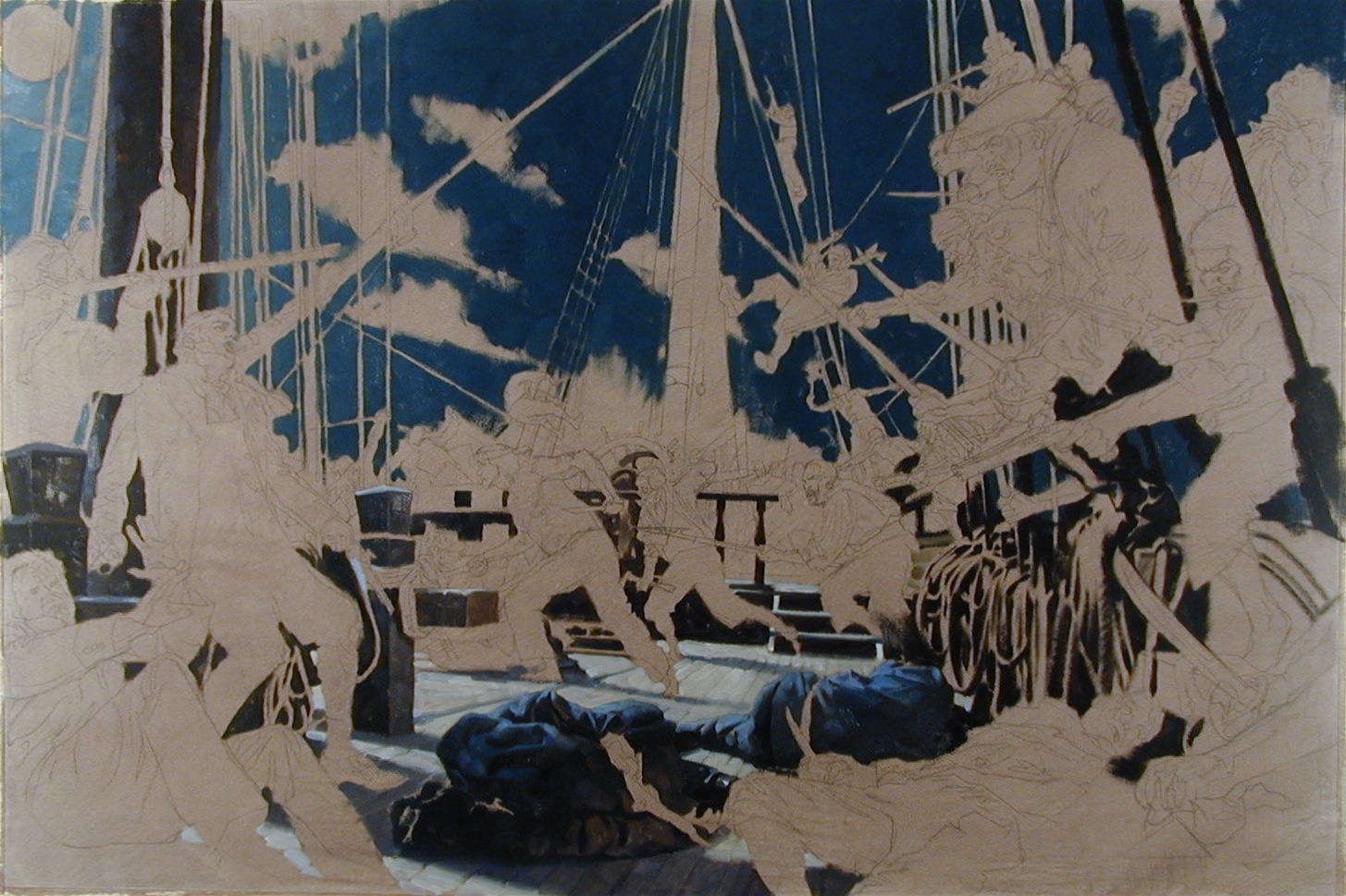
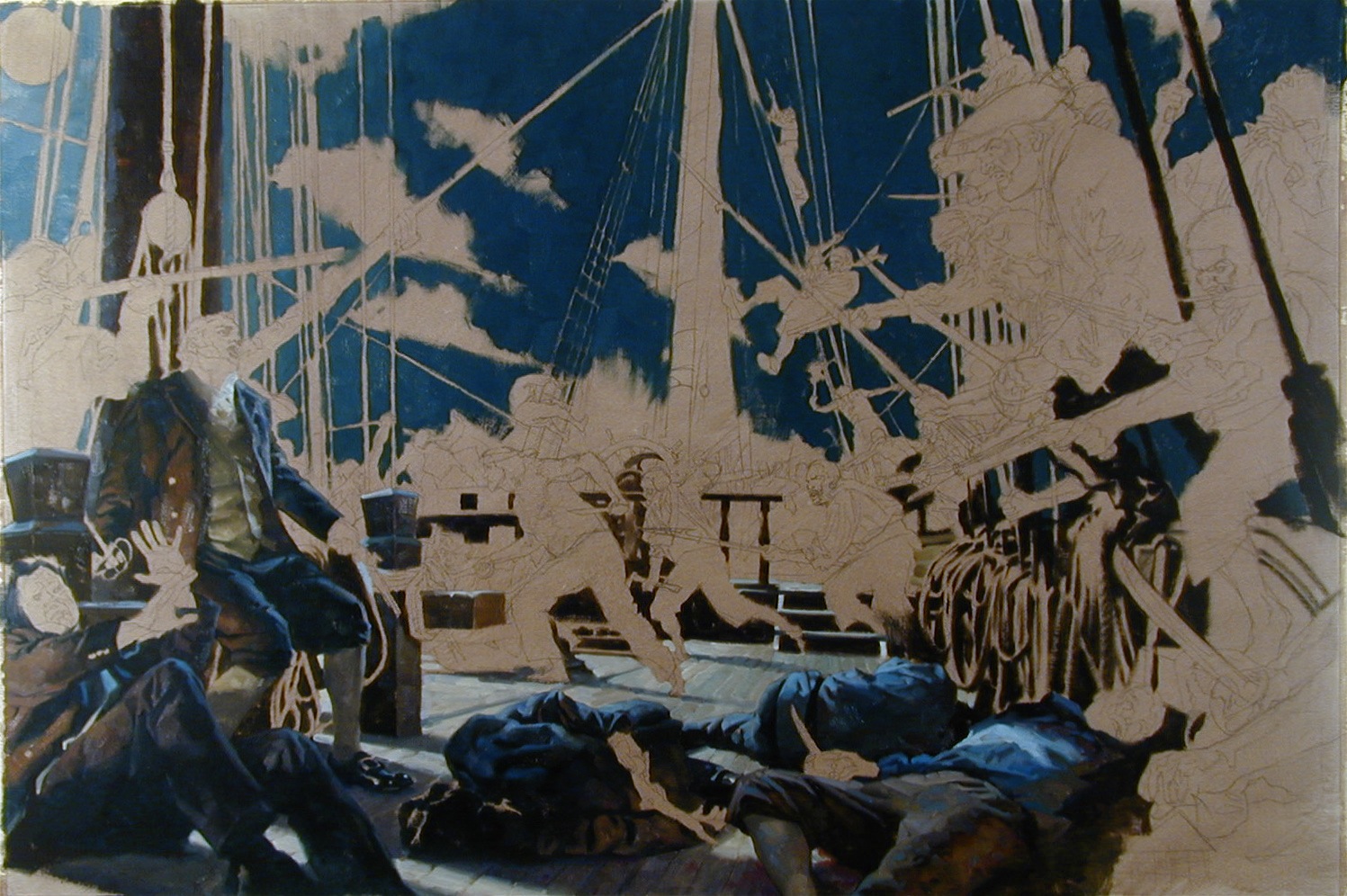
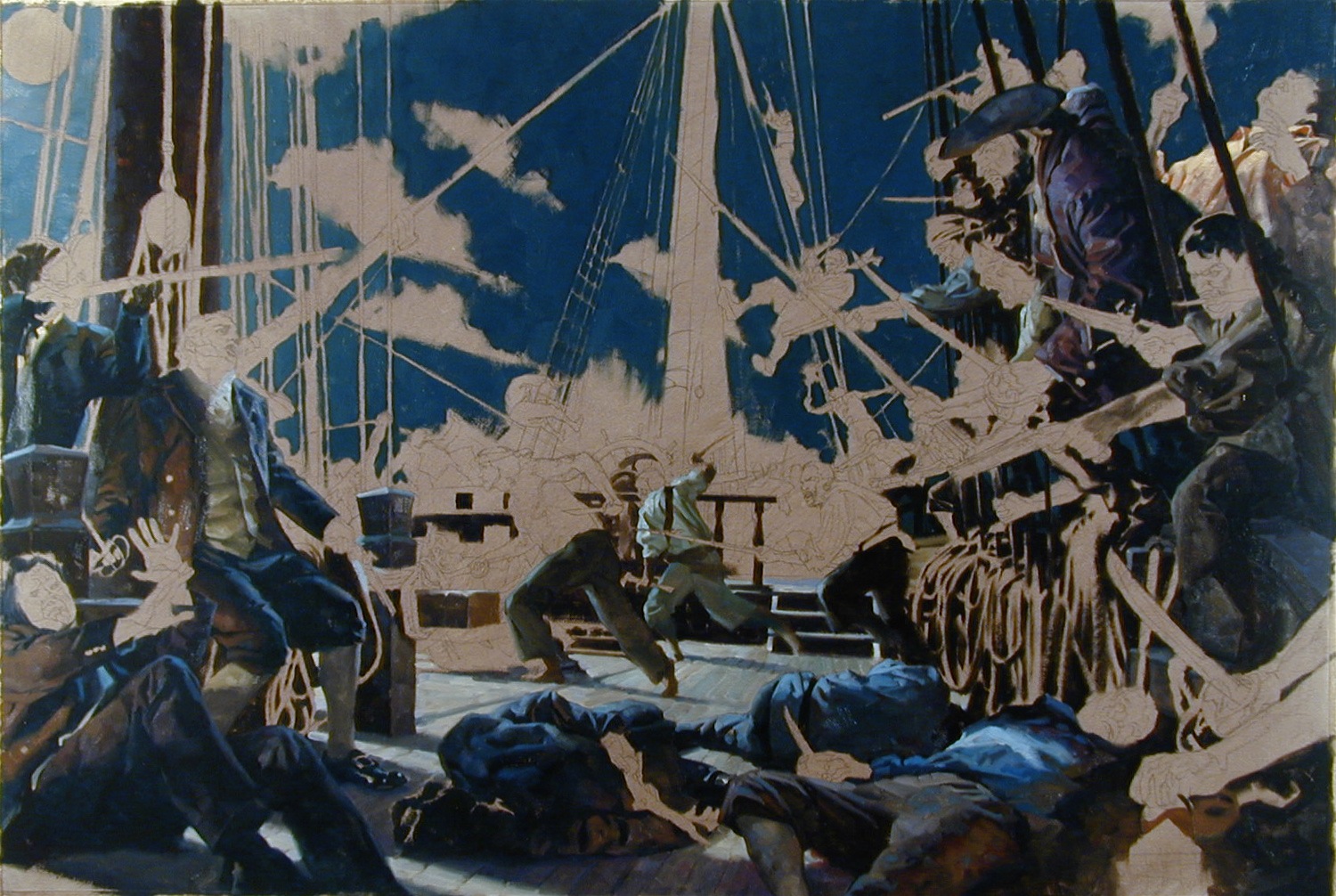
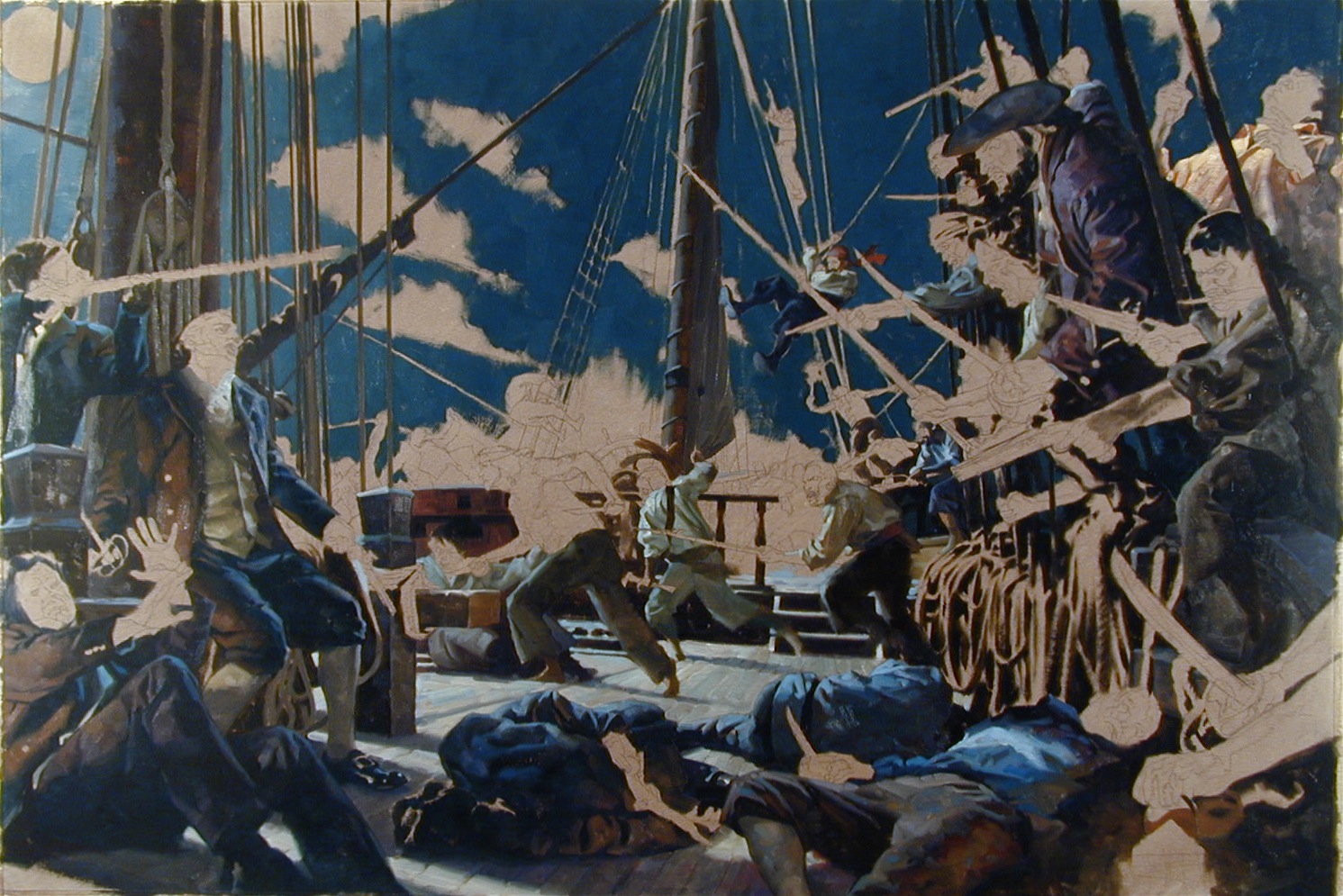

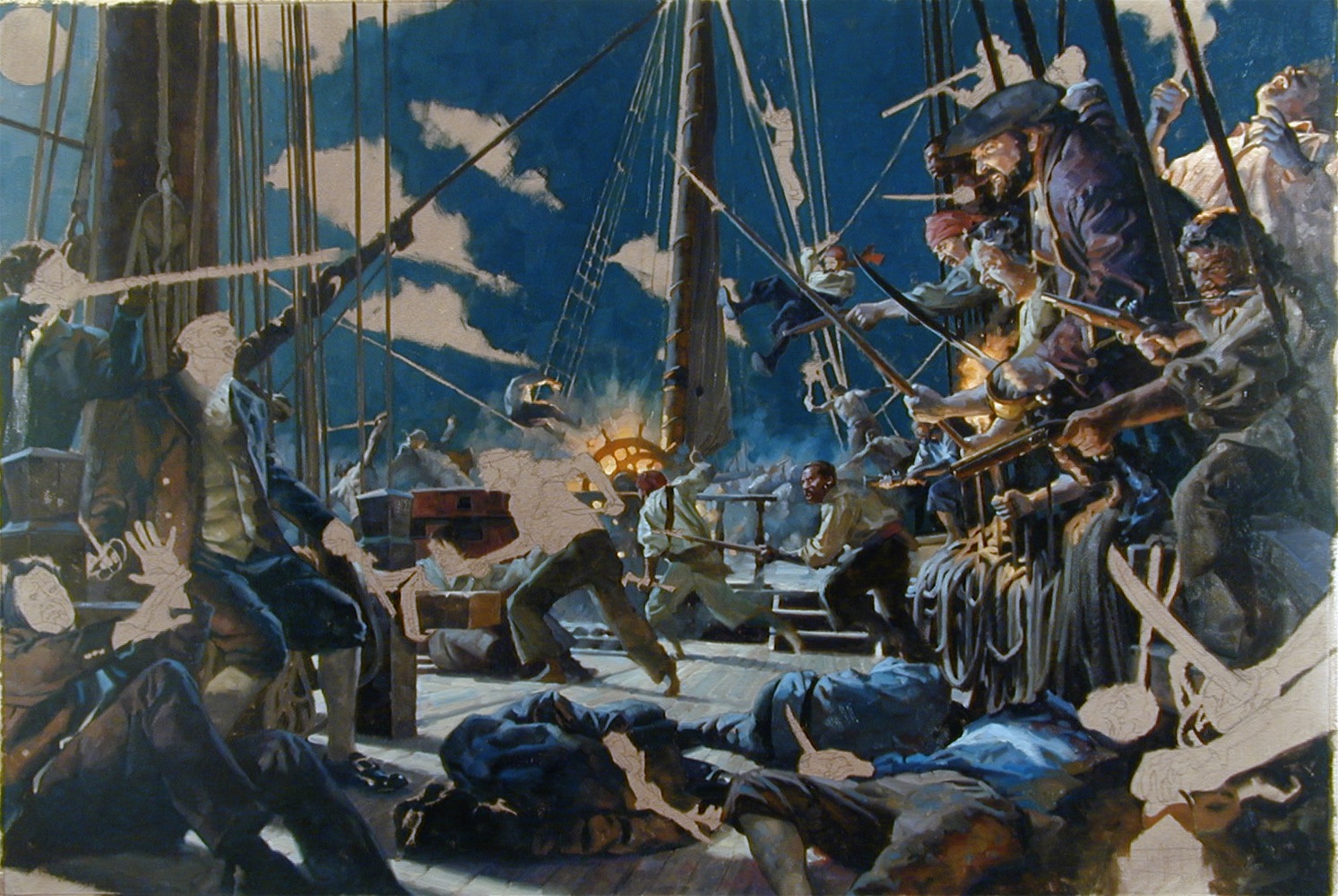
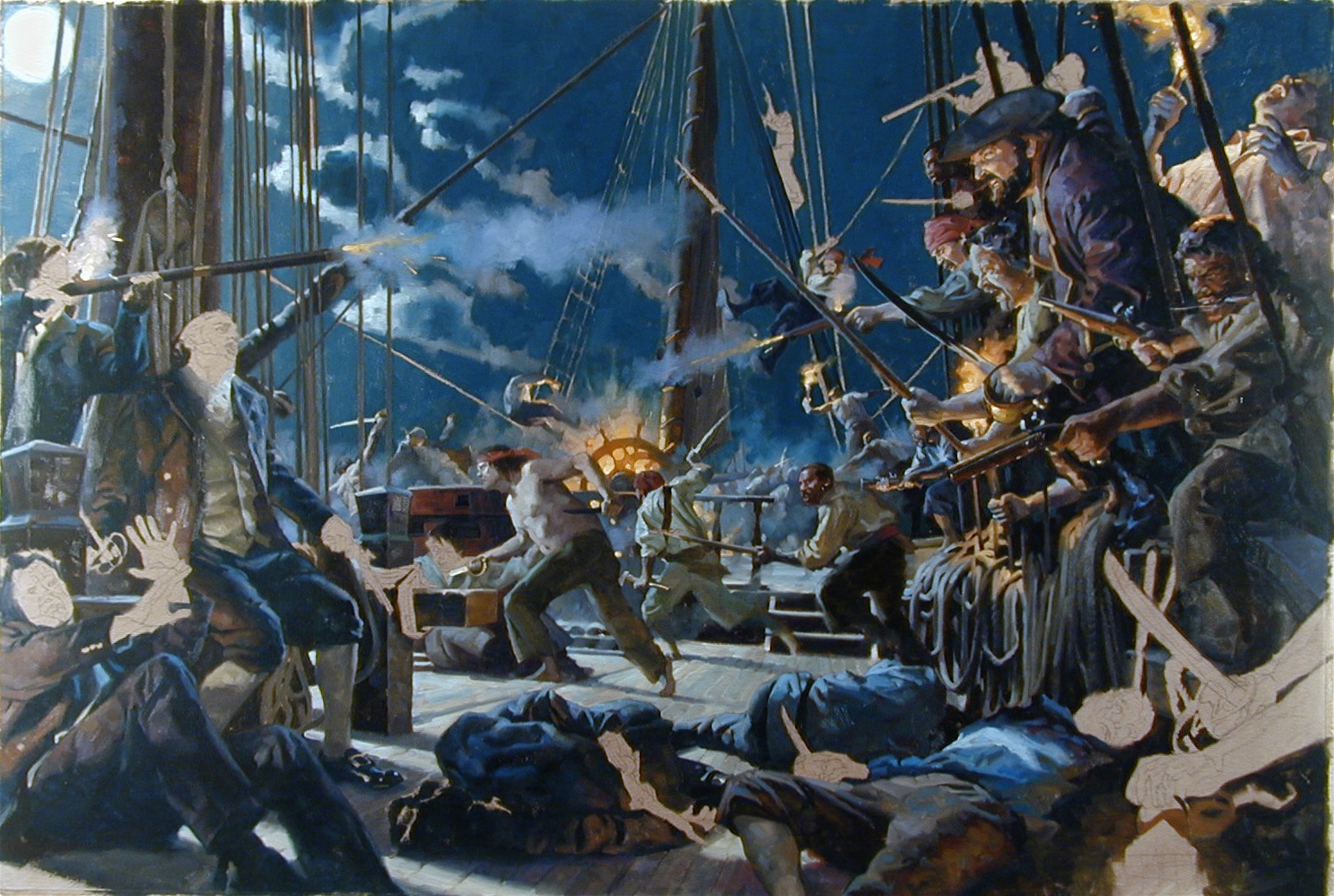
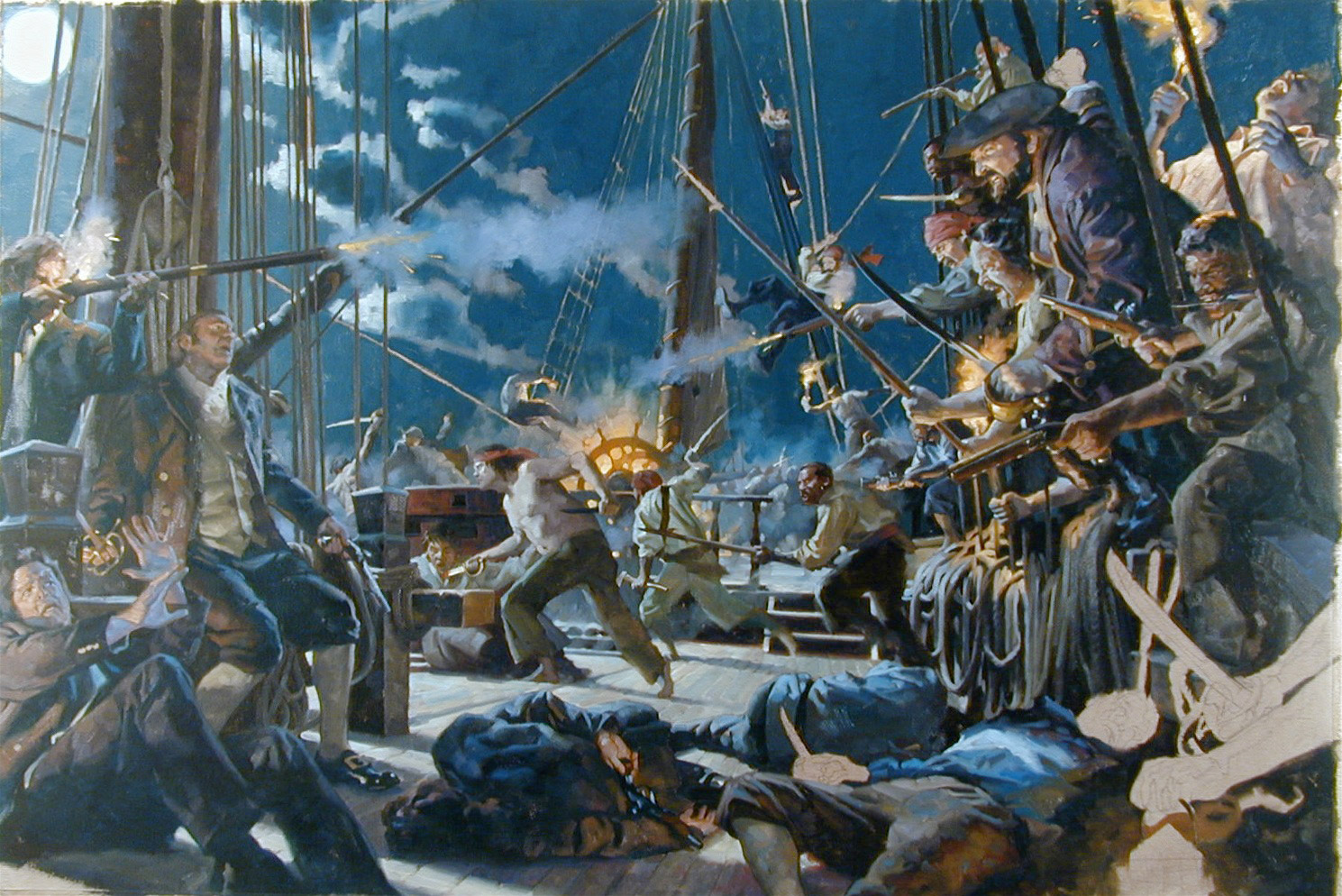

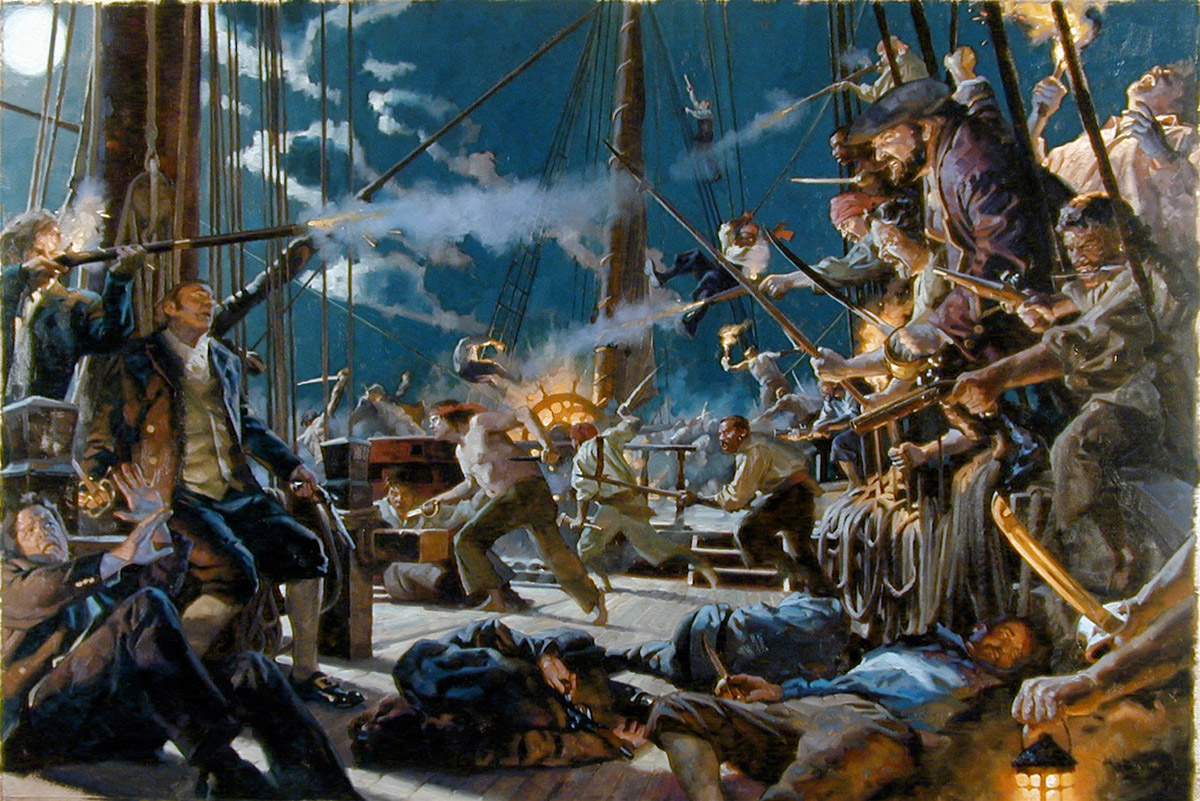
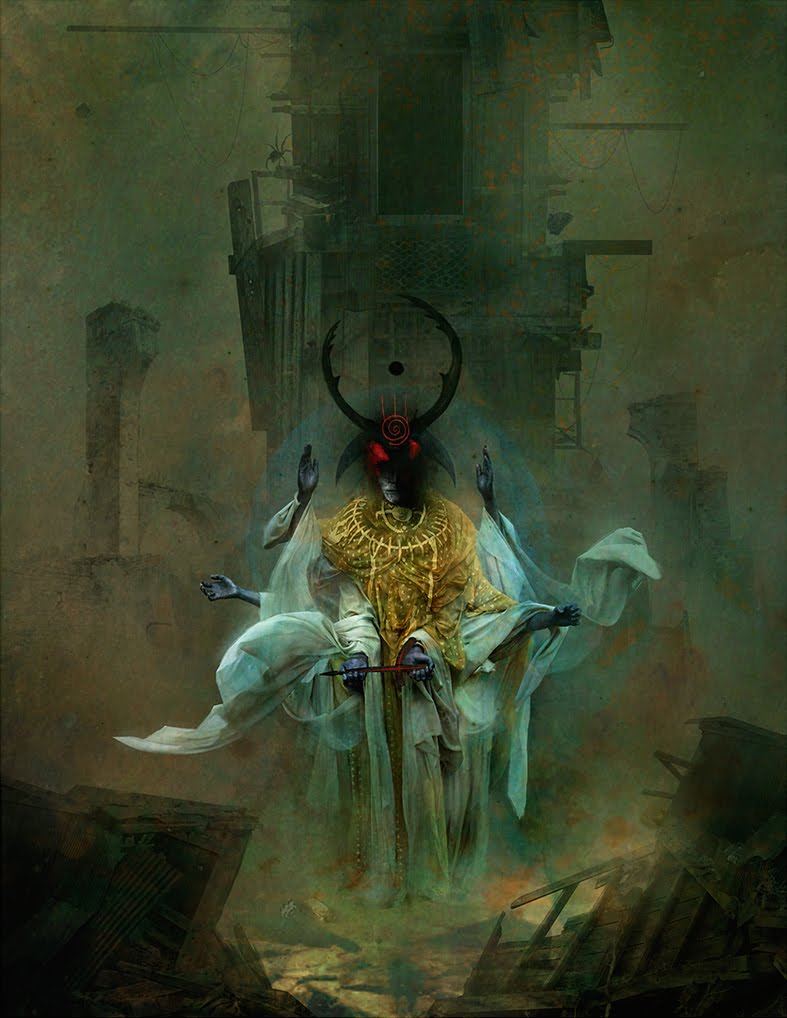
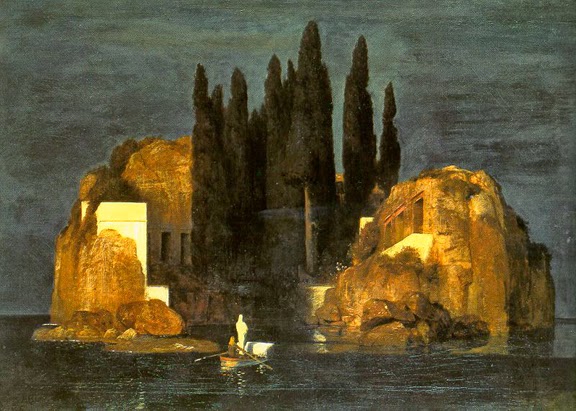
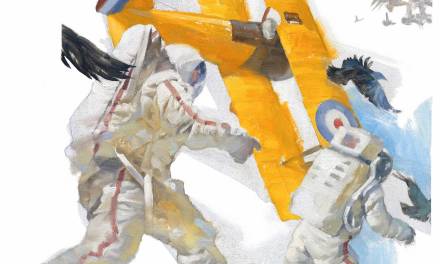
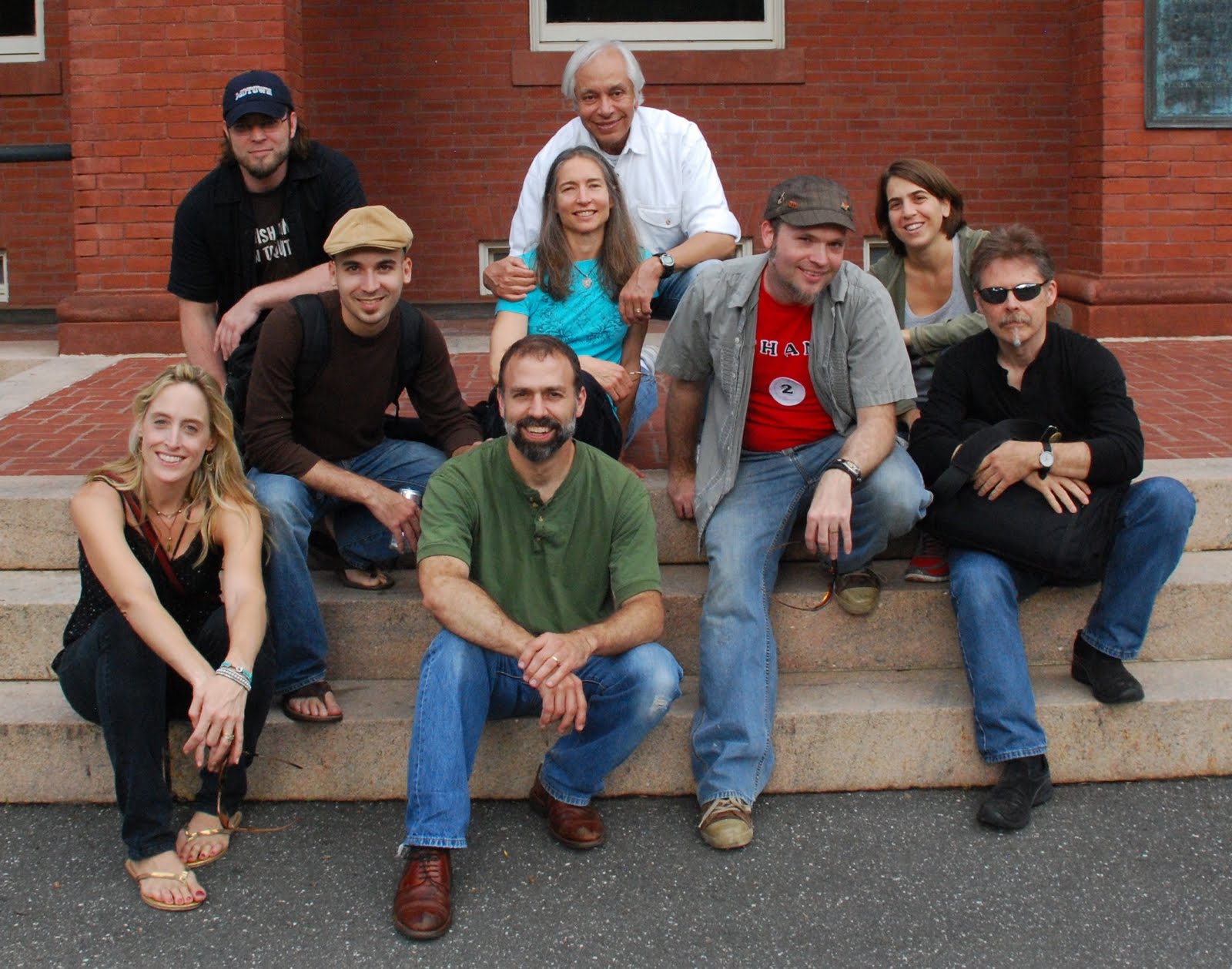

Awesome stuff as always! I really like the composition and the atmosphere. Thanks for sharing your process 🙂
-J
Un capolavoro di composizione e movimento!
Ciao
Paolo
That's amazing! It's so nice to see all the stages of the painting. Thanks!
I love the decisiveness of your work. You can see you lay down the right stroke, the right way the first time (plus i saw it on your download =P ) Amazing work.
Brilliant as always! I still cant get over the fact that you dont work the whole painting at the same time. It also gives me encouragement to hear that even you are still nervous that the client may not like your work.
Hi Greg, In “Above the timberline” you began in the middle ground, On this painting you began with the midnight sky background. What made you work this painting from the background first? and do you use a general rule of thumb on where you start your paintings?
Thanks for showing your process,
Mike
Wow… Again… Wow…
Are you working from a color sketch? It seems you know exactly what color to place and where. Please tell me you have a plan?
Very cool. Well done.
Thanks, you guys!
Anonymous, good question: on this particular painting, I started with the sky because I needed to know what that value would be compared to the darkest darks, which are the black shadows here. The sky & moon lights everything and so would demand that all the figures live within that lighting. In other words, it dictated how they would be lit where there wasn't some fire to spotlight a specific element, like a face.
So it kinda turned out to be a middle tone after all. Notice that after the darkest darks go in, all I had to do was work my way up the value scale from there.
On a different painting, I might start with a figure first because I want the lighting on the FIGURE to be the key point of the painting, and the background atmosphere is subordinate to that.
(easier: sometimes the atmosphere dictates the light on the figures; other times the figures dictate how the scene will be lit. Depends on which is most important to the idea. Better?)
LandPainter: no magic here, just training. I really couldn't have done this in the time allotted if I was 25 again. No color sketch for this because there was just no dang time to do it.
Honestly, as the painting develops on paper, it also MUST develop in my head, so that when I start to paint, I'm working from a mental 'master copy', filling it in so-to-speak, to match it. As I work, I correct, constantly judging values against what's already down and what's yet to be put down.
It's not that complex (I make it sound so!)…but this is where a painter gets to, one way or another, as they get better.
How'd you get so many Todd Lockwoods in one room?
This is a great post! Thank you for taking the time to put it together.
I also really appreciate your later comments. It's helpful to hear you say that you couldn't have done this when you were 25.
It makes me feel like I have more time to keep learning.
I remember you letting me help you hang these on the wall at the 1st IMC and I was in absolute awe and terror! These are masterpieces Greg and this one is one of my favorites. Thanks for all that you do and thank you for sharing so much of your knowledge with the rest of us.
Ow my God, just wonderful. I was waiting for you to show that paint since I watched Above the Timberline, and then you also show the process, is even better. Thanks for sharing that master piece with us. I wish I could see the original!!! Congrats!
You and extremely crazy! 🙂
I wish I could see the original, an day!
Congrats!
I love how close you kept to the initial sketch. REALLY nice to see the process on such an involved piece. flawless execution. Greg, You truly are a ninja.
wow, that's a complex bit of crowd control! Gorgeous painting when you get into the “bits”. The hand with the lantern in the lower righthand corner for example. Beautifully done, Greg. What a daunting painting!
Scared Manchess in the lower left corner!
Howard Pyle would be proud. You really make it look like those fighting pirates are frozen in time as opposed to just standing there in a painting.
This is just crazy.
It's like watching puzzle pieces being laid down, first shot, every time.
Sometimes I do wonder if I'm not a bit crazy, Dan. Even attempting to paint. What was I thinking? But each bit of success builds off the last.
So, yes, Eric…it took a long dang time to learn how to paint multiple figures, especially in conflict. Perhaps I may have to do a workshop sometime that concentrates on my concepts about it. At 25, I was capable of many things in paint, but at a certain point, it wasn't enough. I had to risk more to learn more.
Tim, that's a scared Lockwood in the corner. Manchess is firing a rifle just behind, and getting shot on the right with the torch…
Thanks for the crazy comments, too, you all! I will be showing more from this series…
….and Coro: a ninja's secrets are best kept right in front of someone! LOL!
Hi Greg.
Everytime I see your work it boggles my mind. I am extremely happy that you so actively share your work and process and comments at Muddy colors and shed light to the magic.
As a beginner painter it is hard for me to even comprehend the level of mastery it takes to move through an imaginery painting by painting to a finish or near finish one area at a time relating each value and color to its surroundings.
I have the utmost respect for the hard work, mileage and risk taking ability to challenge your comfort zone and progress to new levels of skill.
I bet the secret to such abilities lie in the Ninja training. Must research, must assimilate:)
Have a good one!
Reeeeaaaaaally cool